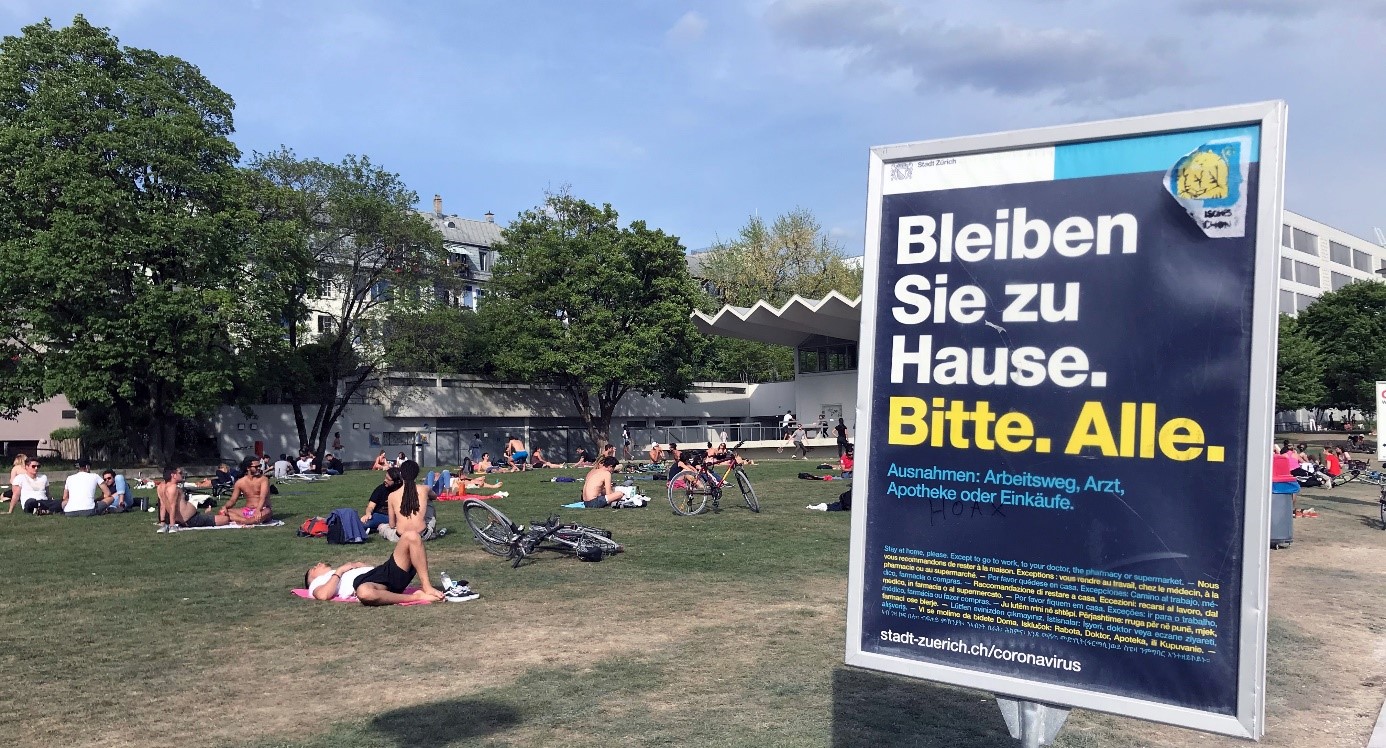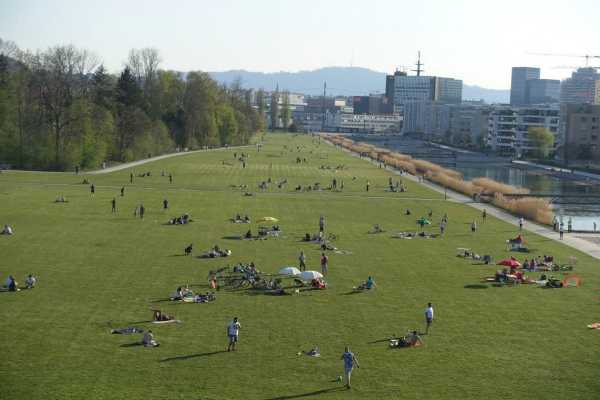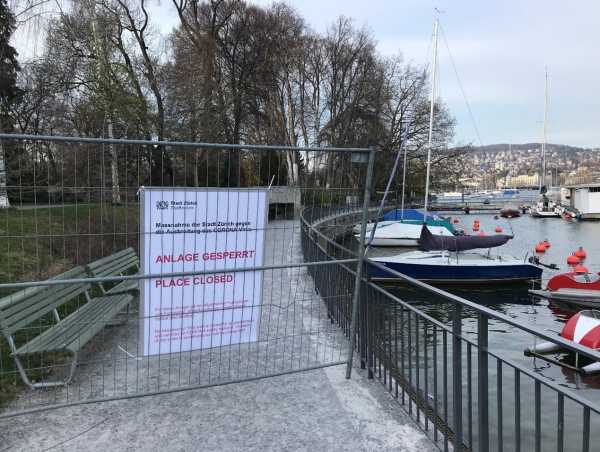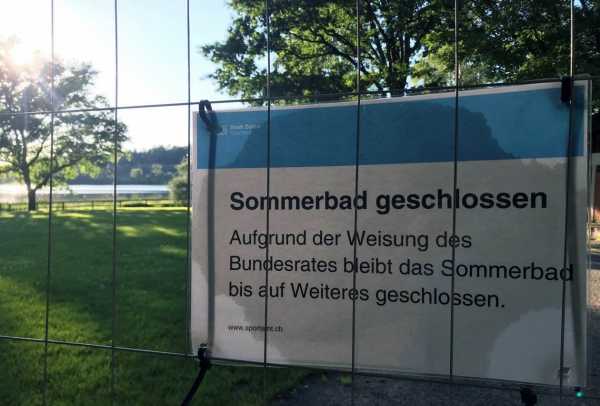
Vacant land, community gardens and public parks are key resources for liveable cities. Fritz Kleinschroth calls on urban planners to focus on giving nature more space and on granting equitable access to green spaces.
Strolling along the promenade by the lake, walking through the city by the river, playing ping-pong in the park - everyday things like these are what increase our sense of well-being. Things we take for granted and around which we organise our free time - until, suddenly, the things we take for granted are no longer possible.
When the pandemic gave rise to the lockdown starting in March 2020 in Switzerland and throughout Europe, the public parks and promenades by the lake and river in Zurich were closed - and remained completely inaccessible to the public for almost three months.
As a nature-loving city dweller, the closures were a drastic experience for me personally. The sealed-off promenades and parks made us painfully aware of how important urban green spaces are for our quality of life and how much we need them for our physical and mental health.
About the author
Fritz Kleinschroth is a senior scientist at the Chair of Ecosystem Management at ETH Zurich and researches the consequences of urbanisation for ecosystems.
A lot has happened since. And I am pleased to note that there is now a lot more talk about the role of nature in urban areas than before the pandemic. COVID-19 is history, the topic of urban greenery has stayed - at least for the time being. This also has to do with the heatwaves we experience in urban summers when cooling vegetation is worth its weight in gold. In Zurich, parks are being subject to a lot of debate right now, with two major initiatives in the pipeline relating to Mythenpark and the lakeshore.1
Green spaces have experienced a veritable boom in scientific research: virtually throughout the world, researchers have been investigating the key question of how the use of urban green spaces changed during the COVID-19 lockdowns.
The question is not insignificant. Countries and cities reacted very differently to the pandemic. While Switzerland, for example, was known for its liberal lockdown, Zurich proved to be one of the most restrictive cities in northern Europe when it completely closed down most (albeit not all) of its public parks.
I conduct my own research into the interplay between urban infrastructure and ecosystems and I see the attention being given to green spaces since COVID-19 as an indicator of what is really important to city dwellers. Right at the beginning of the pandemic, we showed that the number of Google searches for terms such as "going for a walk" in the German- and English-speaking world soared for a short space of time - an indication of the sharp rise in demand for public parks during the crisis.2

Also based on some widely cited studies from Northern Europe, most researchers (including us) have implicitly assumed there was a general increase in the use of green spaces. This is also because people's need for outdoor exercise was a lot greater than before the pandemic given that they were working from home, schools were closed and nobody could travel.
But there were hundreds of other publications on the subject worldwide - and they paint a contradictory picture: while there was a surge in use of green spaces in some places, it declined in others. It soon became evident that there was no clear consensus.
A question of prosperity
Working with a multilingual team, we systematically analysed the literature on the changing use of urban green spaces during and after the COVID-19 lockdowns from 2020 to 2022. We identified and comparatively analysed 178 studies on the subject in 5 languages, from 60 countries and in over 3,000 articles. Our review made it to the front page of the external pageNature Cities journal.3
Our analysis actually reveals a surprisingly large discrepancy in the use of green spaces in different parts of the world. We can largely attribute these differences to financial prosperity. We show that people in wealthier areas were making increasing use of green spaces, while those in poorer regions are making a lot less use of them.
Urban green is distributed unevenly
This means that not everyone in cities and regions has the same access to green spaces. Social inequality is consequently manifested in two ways: people who either lived in affluent areas or owned private gardens (or both) were able to compensate for the restrictions by engaging in more outdoor activities. While those without such opportunities had to do without such health and well-being benefits.
This raises important questions about the equitable distribution of green spaces in urban planning. If we want to prevent an increasing number of people from opting to live in a safe house complete with a garden in the suburbs, we need to fundamentally change the way we design our cities.
"In my opinion, creating liveable cities is less about providing parks in the traditional sense and a lot more about creating informal and unplanned green spaces."Fritz Kleinschroth
Less privileged neighbourhoods where people live in small flats need more nature and outdoor recreation space - for example, by rendering vacant land accessible and usable. The overarching goal of "inner-urban densification " in urban planning can only be realised if sufficient green spaces and fair access to them are guaranteed. For this reason, we also speak of "dual inner-urban development", which densifies buildings while improving green space quality.
Recommendations for liveable cities
Our COVID-19 findings speak in favour of making our cities greener, healthier and more equitable - and consequently more resilient to climate change and loss of biodiversity. We know that people made greater use of forests, waterfronts and other natural elements during the pandemic.
Zurich's parks during the pandemic
The city of Zurich's lakeshore was almost completely cordoned off from Arboretum to Chinagarten (pictured: Arboretum, spring 2020). The popular summer pool at Katzensee was closed (pictured: Katzensee, spring 2020) Unusual measure: Lützelsee could only be circumnavigated in one direction (pictured: Lützelsee, spring 2020).
In my opinion, creating liveable cities is less about providing parks in the traditional sense and a lot more about creating informal and unplanned green spaces: we can utilise unused potential such as wasteland close to housing, but we can also make renaturalised watercourses and roadside green space more accessible. Community gardens, which have become increasingly popular in recent years, can also make a contribution.4 They offer more people the opportunity to work in a garden and they require less space than private gardens.
The city of tomorrow is green and equitable
Although COVID-19 itself may no longer be of great interest to the public, many people, including me, remember this time as a time of upheaval.
It has become clear that cities are more than merely transport and commercial centres of grey infrastructure - they are also living spaces for people and nature. More green-blue infrastructure and socially equitable access to these recreational zones close to where people live are the fundamental prerequisites for making cities liveable and sustainable in the long term.
1external pageMythenpark and external pageUferinitiative
2 Kleinschroth F, Kowarik I. (2020). COVID-19 crisis demonstrates the urgent need for urban greenspaces. Frontiers in Ecology and the Environment, 18(6), 318-319. external pagehttps://doi.org/https://doi.org/10.1002/fee.2230
3 Kleinschroth F et al. (2024). Global disparities in urban green space use during the COVID-19 pandemic from a systematic review. Nature Cities. external pagehttps://doi.org/10.1038/s44284-023-00020-6
4 Bieri D, Joshi N, Wende W, Kleinschroth F. (2024). Increasing demand for community gardening before, during and after the COVID-19 pandemic. Urban Forestry & Urban Greening, 92, 128206. external pagehttps://doi.org/10.1016/j.ufug.2024.128206










